Site Security FLAP: L is for Lighting

[July 2014] Securing – and protecting – a transmission site takes more than an occasional visit. Thieves do know when a company appears unconcerned about a site. Kevin Kidd continues with his survey on how to reduce the damage that can occur from unwanted visitors.
Last time we discussed the F in the acronym FLAP which of course stands for Fences.
The article discussed the important fence components and various observations on methods that work. If you missed it, you can still read it here.
L is for Lighting
Light is the fundamental enemy of thieves.
Well, yes, cops may be their most fundamental enemy but light is usually cheaper than doughnuts.
At too many of our (yours and mine) transmitter sites, any required lighting is provided by vehicle headlights and flash lights. If there was ever an outside light installed, it has long since failed and never replaced. Oops.
This situation simply breeds theft opportunities.
Yet, our message is that an effective outdoor lighting system does not have to be huge or very expensive. Our goal is to address some of the lighting techniques that have been found to work in various situations.
(On the other hand, if L for Light fails to deter them maybe L for Lead (Pb) will get their attention. Well, I can dream…)
Full Site Lighting
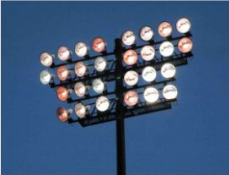 In a perfect world we would have every square inch of our sites lit just like a baseball stadium, 24/7.
In a perfect world we would have every square inch of our sites lit just like a baseball stadium, 24/7.
Of course, in most situations this is not a practical approach.
Nor in many instances would it be permitted by neighborhood or other light pollution restrictions – not to mention the damage to the owner’s pocket book caused by a bizillion Watts of photonic power.
Furthermore, while we have worked on sites where a limited effort at full site lighting was attempted, there usually was still a good deal of the site left in dark shadows.
One particular site that that had relatively complete lighting comes to mind. Most of this large site is lit by huge light tower-mounted mercury vapor fixtures that provided enough lighting for a CCTV camera system. The lights and cameras were centrally mounted on tall wooden poles. This system worked very well but was very expensive to operate and maintain.
Eventually, it was determined that there were still too many shadows in various areas and additional tower base lighting was installed to fill those shadows. That cost even more.
Disturbed Lighting
In the absence of total site lighting, we have found that effectively lighting the site entrance, transmitter building perimeter, and tower base area(s) provides a substantial amount of protection.
True, the dark areas between the lighted areas can be vandalized, but as it turns out, practically all vandalism and theft incidents at radio transmitter sites begin at either the transmitter building or tower base and proceed outward.
Distributing the light into these areas allows smaller, cheaper fixtures be used to great effect.
Dusk-to-Dawn Vs. Motion Lighting
There is a lot discussion of which light control method is best.
Both have advantages but we believe that dusk-to-dawn lighting does provide the best deterrent. Dusk-to-dawn consumes more power but can be effectively monitored for failures and damage. In contrast, motion control only consumes power while triggered. But, then, it is impossible to easily monitor for failure or vandalism.
Another factor to consider: the type of lighting used will help determine the best type of control. Fixtures that require warm-up (sodium, metal halide, etc) are not good candidates for motion detection. That even includes some CFL lamps which can require a few minutes warmup for full brightness.
Bottom line, though: if motion lights are all that can be installed, do it. Some light is better than no light.
Turn It All On
If the existing site wiring permits, all transmitter building and tower base security lighting should simultaneously illuminate at dusk.
If there is not enough existing wiring to allow simultaneous AC control, cheap Wi-Fi radios (such as the UBNT.com) and IP relays (like ControlByWeb.com) can be utilized for cost effective control and monitoring. Of course, this assumes there is continuous power available at the tower bases.
An alternative to power some parts of the site: there now are some decent solar “shed” lights that will provide useable illumination in the absence of commercial AC power.
Transmitter Building Lighting
First and foremost: the entire building perimeter should be lit with wide area fixtures.
Having a lot of lighting is desirable but having enough light to make thieves visible and uncomfortable will be better than allowing a thief to sit comfortably in a dark corner.
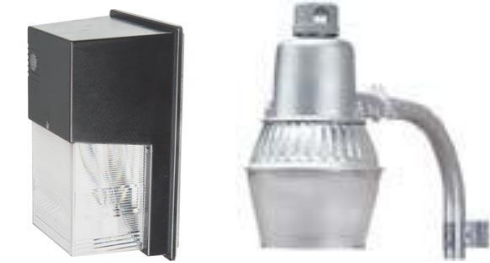
Speaking of dark corners: There should not be any! Wall packs, security lights, and heavy-duty positionable flood light fixtures can serve well for this purpose. These fixtures are commonly available at big box and local electrical suppliers.
In addition to dark corners, there should not be any cubby holes, overgrowth, or other hiding places inside the fence that are accessible to thieves. Effective fences should block access to any of these hidey-holes for thieves.
Most TX sites have some type of HVAC system in the form of either a common wall unit or a dedicated system. The compressor unit is a favorite target of metals thieves.
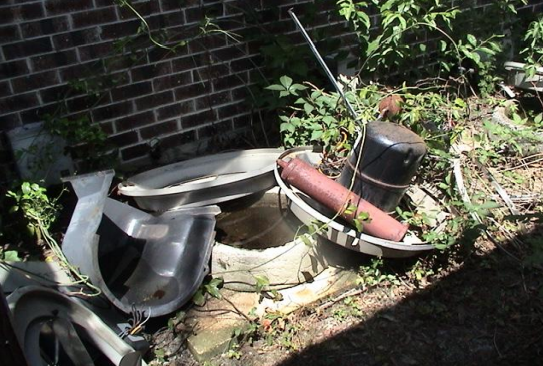
In fact, we have determined at some vandalized sites that the theft started with the HVAC unit and, while prowling for more loot, discovered the copper mine. HVAC units deserve their own lighting and internal tamper monitoring (which will be covered in the forthcoming A is for Alarms article).
The transmitter building perimeter lighting fixtures should all be wired such that they come on at the same time but are all individually wired back to a central point for monitoring.
Tower Base Lighting
Tower base lighting typically consists of a couple of standard flood light fixtures, security light fixtures or side mounted barn/farm fixtures.
Common flood light fixtures must be mounted in a weather protected location such as under the eve of the building. Again there should not be any dark corners or other areas where a vandal can hide.
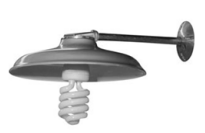
The tower base lighting should be triggered by the same photocell system that triggers the transmitter building lighting. As noted earlier all lighting should be automatically monitored for damage and failures.
Driveway Lighting
Similar to tower lighting, lighting for the driveway should come on simultaneously with the other lights and be wired such that it is monitored for failure and damage.
Standard security light fixtures will work well here, but should be mounted high enough to keep an individual from reaching it from the ground level – or by standing on a vehicle.
Monitor the Light System
Now, a frugal person might well ask, “If all that lighting is potentially going to be damaged by vandals, why put it in at all?”
Ah-hah! That is a good question. And it does deserve a good answer, which is: because we are going to use the thieves’ worst enemy against them. Or more to the point, if their fear of light fails to keep them away, we will turn their destruction of the lighting system against them in the form of an alarm.
That is why we are going to tell you that you should monitor all the lighting circuits to determine if there has been a simple failure or potential damage.
Over the years, we have found that at vandalized sites with working site lighting, that lighting was damaged prior to the vandalism.
Not in some, not in most, but in all cases the site lighting was damaged to some extent before or during the vandalism event.
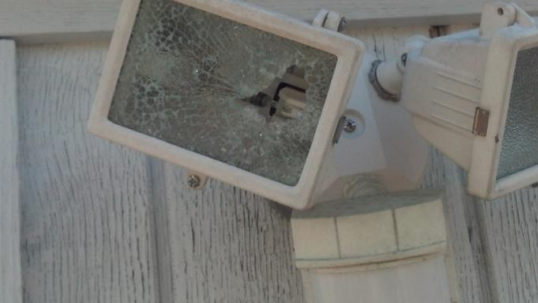
In most cases, the fixture and bulbs were physically broken. In a few cases the vandals simply unscrewed bulbs or, in even fewer cases, moved the light fixture away from the area in which they would be “working.”
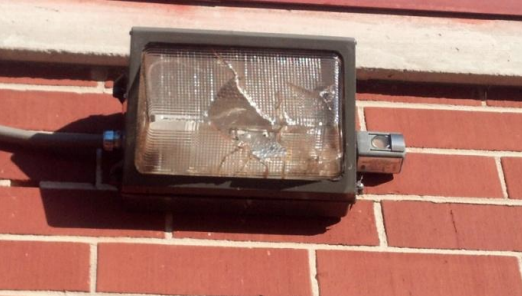
We will more thoroughly discuss A for Alarms in the next installment but, in short, we believe that well-monitored sites should have separate alarm systems for professionally monitoring building intrusions – and a second system for locally monitored lights / external monitoring.
How to Monitor Lights
Your second – or lighting alarm – system could use the stations existing remote control or an IPbased status system. Actually, it should.
There is a very good reason lighting circuits are more effectively monitored in-house rather than through an alarm company: We certainly do not want the police called for simple lamp failures.
If possible, each light should have its own monitor channel such that individual outages can be defined. In this way, a single light outage could probably be considered to be a failure that can be addressed at the next site maintenance visit.
However, if a series of outages occurs over a few minutes or hours, it is worth a call to the local law enforcement or a careful personal visit to the site.
There are several ways to effectively monitor the integrity of your lighting system.
Continuous Monitoring
In the past there have been devices to monitor incandescent lamps continuously by flowing (and measuring) a small amount of current even when the lamps would be off.
I have not installed one of these systems but I believe that they would not work with most CFL or LED lamps.
Current Monitoring
We have used common SSAC SCR430T tower light monitor relays to monitor individual or small groups of lamps.
The street price for a single SCR430T is around $100. SSAC (and others) have even cheaper alternatives that will provide basic monitor currents for about $25/unit (SSAC LCS10T12) but will require some external circuitry.
To be effective the trigger current must be set to indicate the loss of a single lamp. LED or CFL lights require less operating current and thusly must be monitored at lower currents. Current monitor sensitivity can be increased by additional primary turns thru a sampling torroid.
Visual Monitoring
We will more thoroughly discuss video alarms and recording in the next installment but in the interest of including this here as part of monitoring, it is worth noting that decent IP cameras are quite cheap now.
A cheap camera pointed at a distant tower base will allow monitoring of the lights even if a person could not be identified.
In the next installment, we will look at methods to effectively monitor the transition from daylight to dark, and enable alarms that will be useful in protecting your site.
– – –
Kevin C. Kidd, CSRE/AMD is the proprietor of AM Ground Systems Company and KK Broadcast Engineering.
More information on ground systems and security systems can be obtained by calling Kevin at 1-877-766-2999 or visiting his web site at: www.amgroundsystems.com
